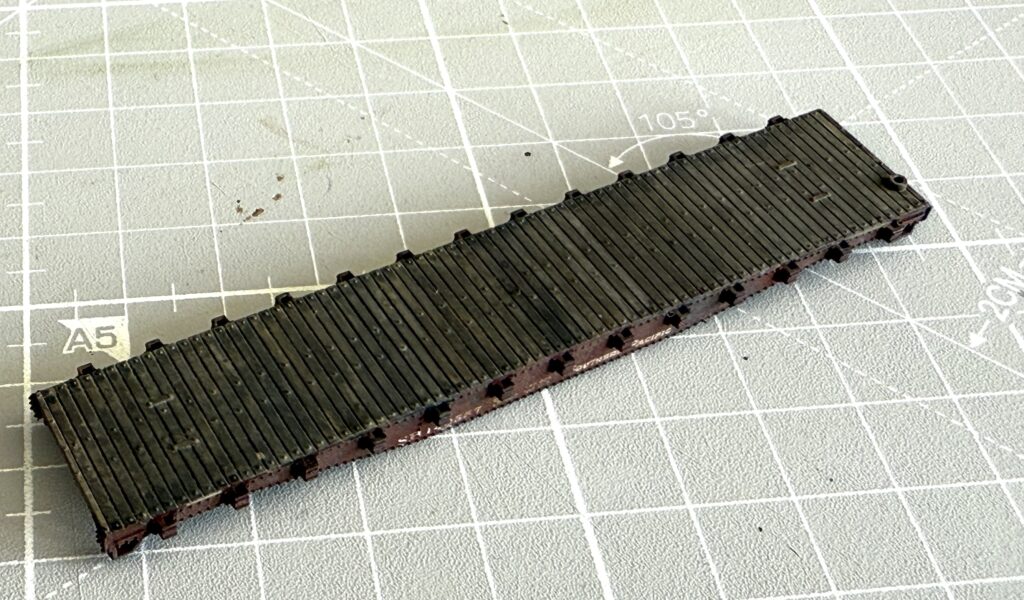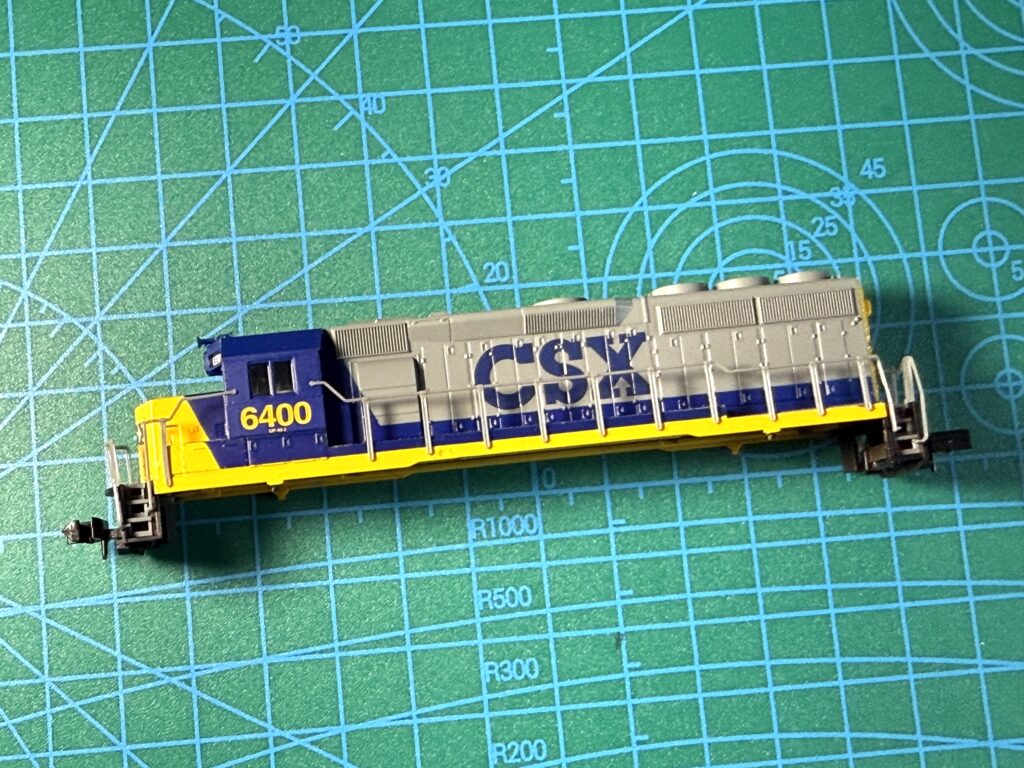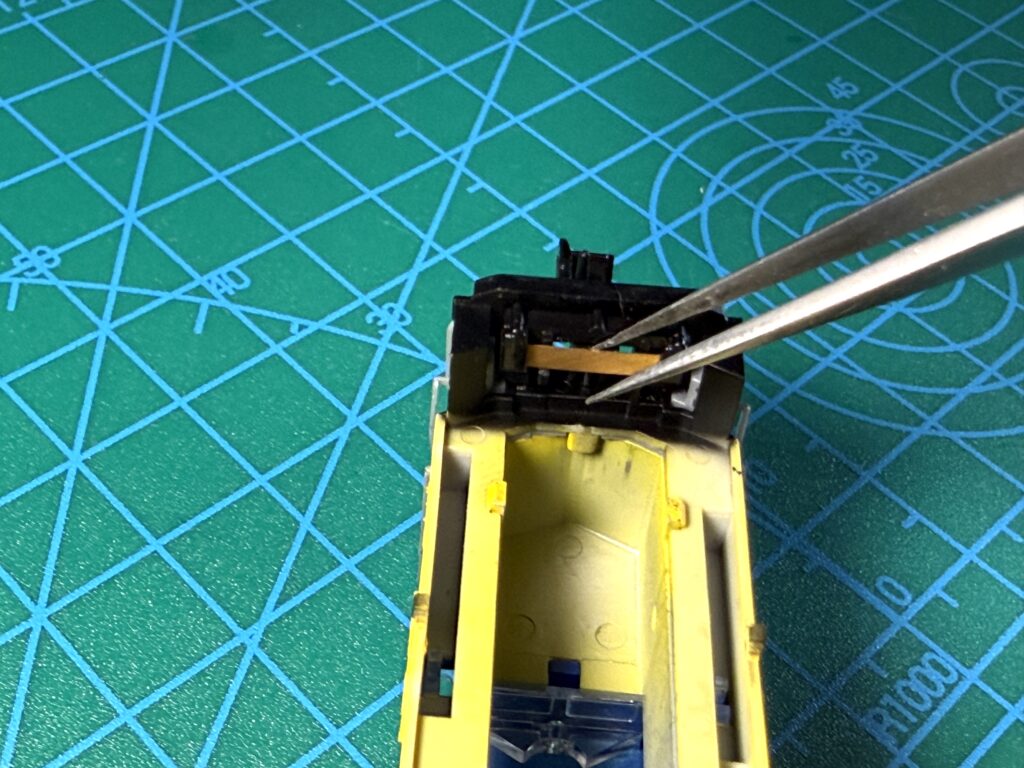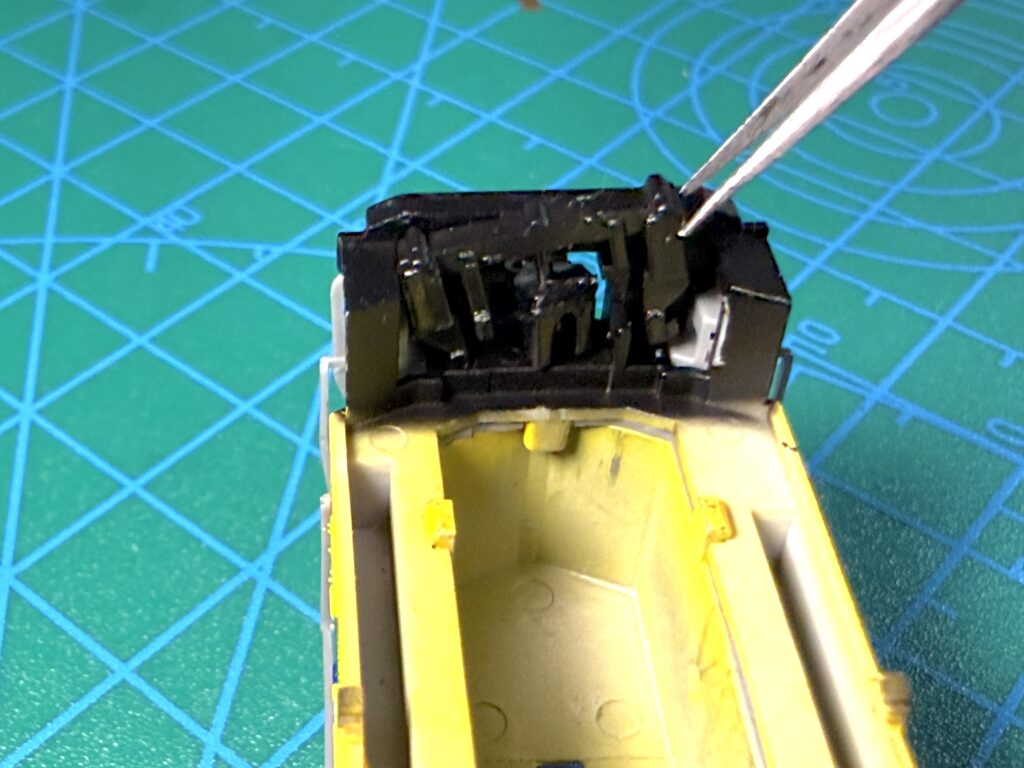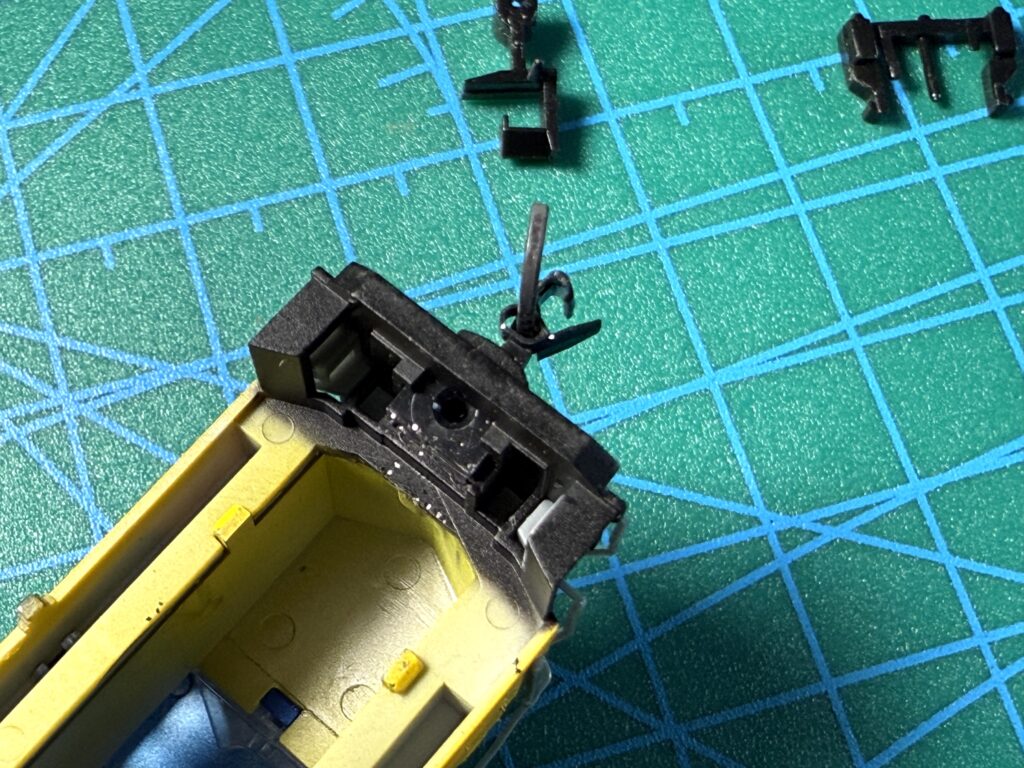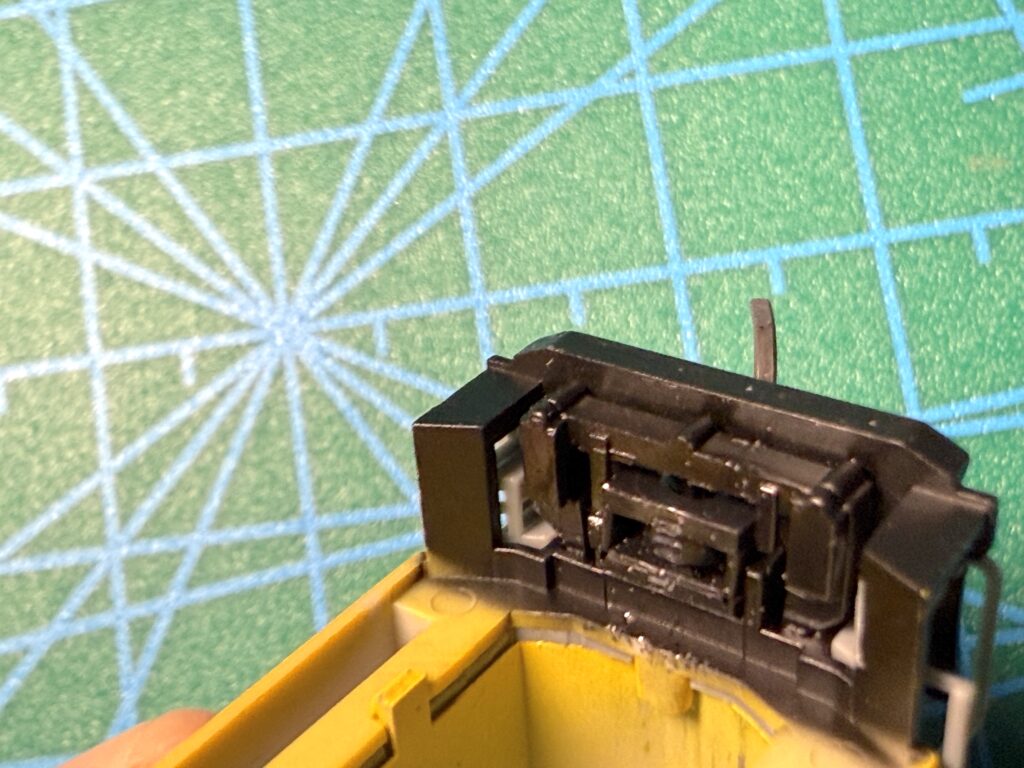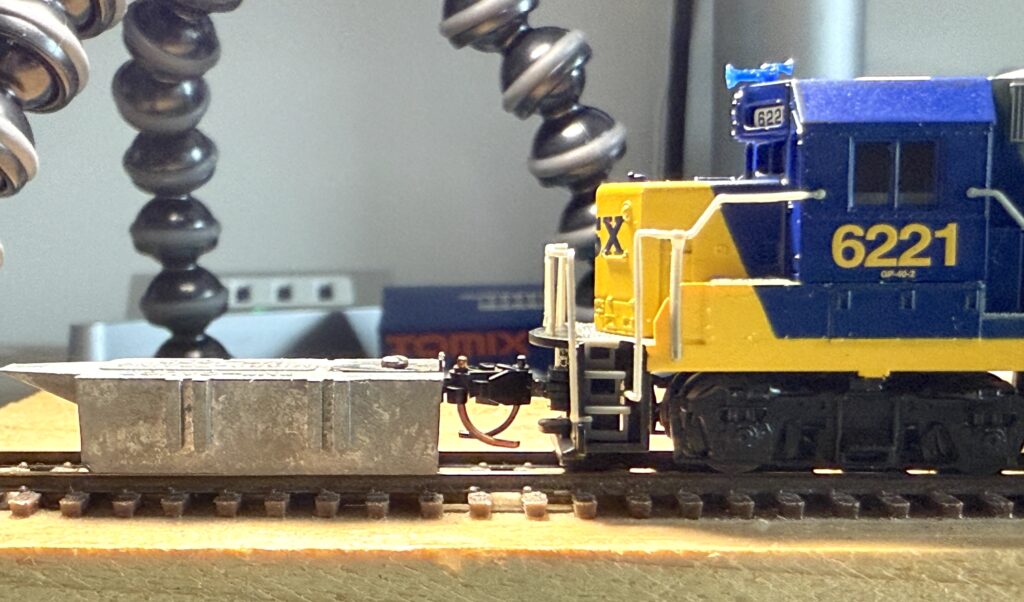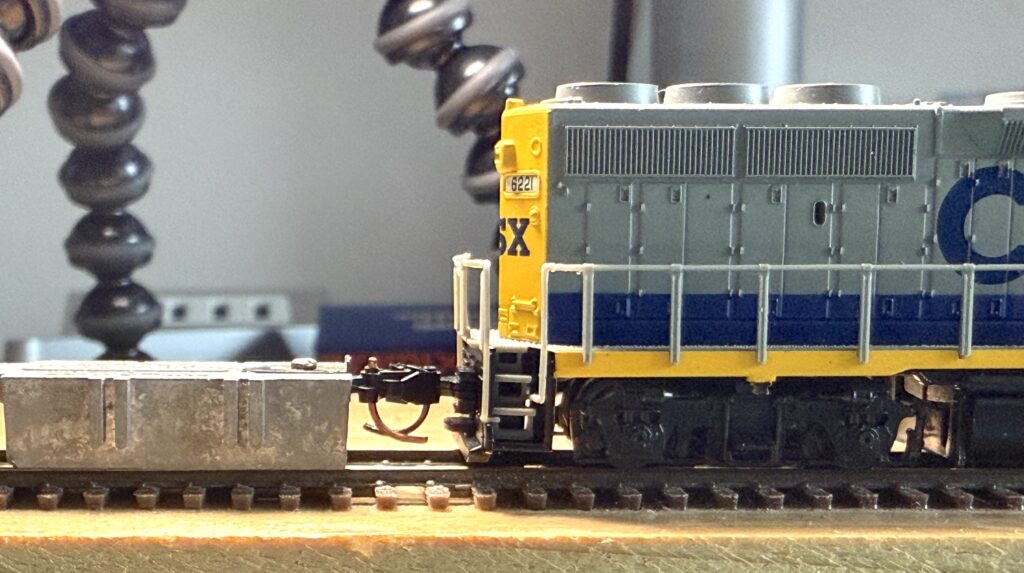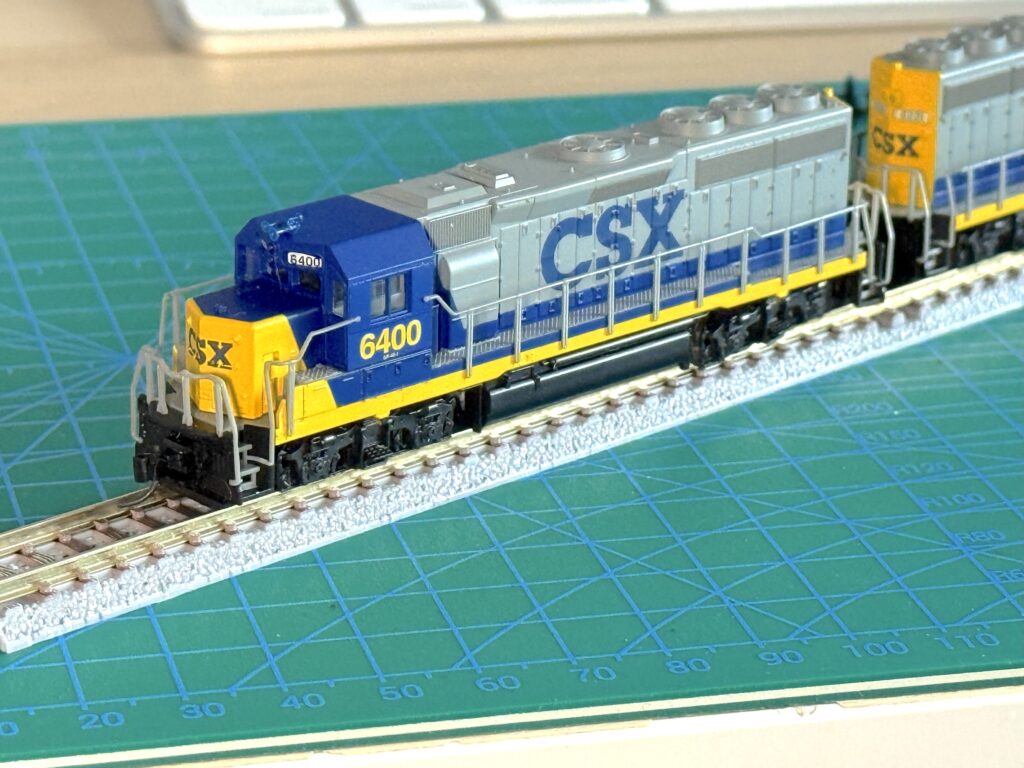Weathering Flatcars
Weathering flatcars to make plastic look like wood
Using acrylic paints, India ink, and a set of paintbrushes, you can achieve convincing results when weathering flatcars. I weathered the Atlas BN flatcar pictured below as well as an old Con-Cor SP flatcar, in service on my N scale layout.

I first removed the trucks with couplers, then proceeded using Vallejo acrylic colors.
The key is to work in light layers. For the Southern Pacific flatcar, which already had a brown base, I applied a wash of dark brown for added depth.
I used Vallejo colors: White (71.001), Uk BSC 64 Portland Stone (71.288), Beige (71.074), N. 41 Dark Olive Drab (71.316) and Dark Rust Wash (76.507). Additionally, I prepared a solution by mixing a couple of drops of Winsor & Newton India Ink with water and 10 drops of isopropyl alcohol. I painted each groups of 2-3 wooden planks in different shades to create natural variation.

Here is the Con-Cor SP flatcar receiving a wash of diluted black India ink.
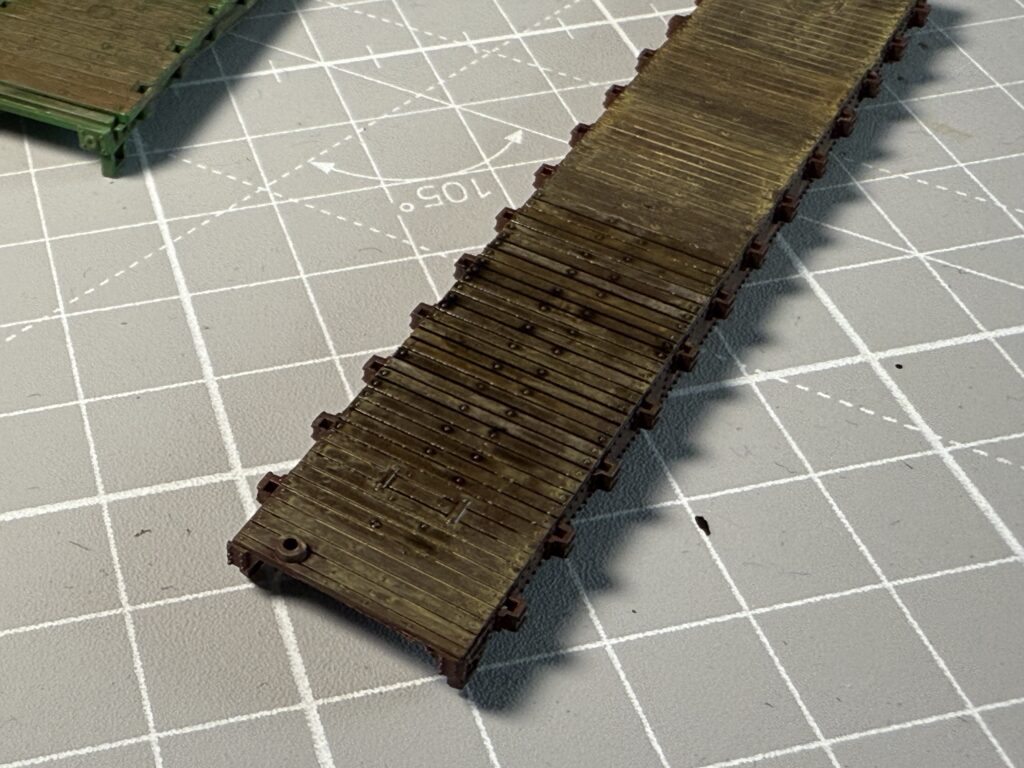
I used Vallejo Retarder Medium (70.597) to extend the drying time of acrylics, making brushwork easier and more controlled. First, I applied a wash of White (71.001).
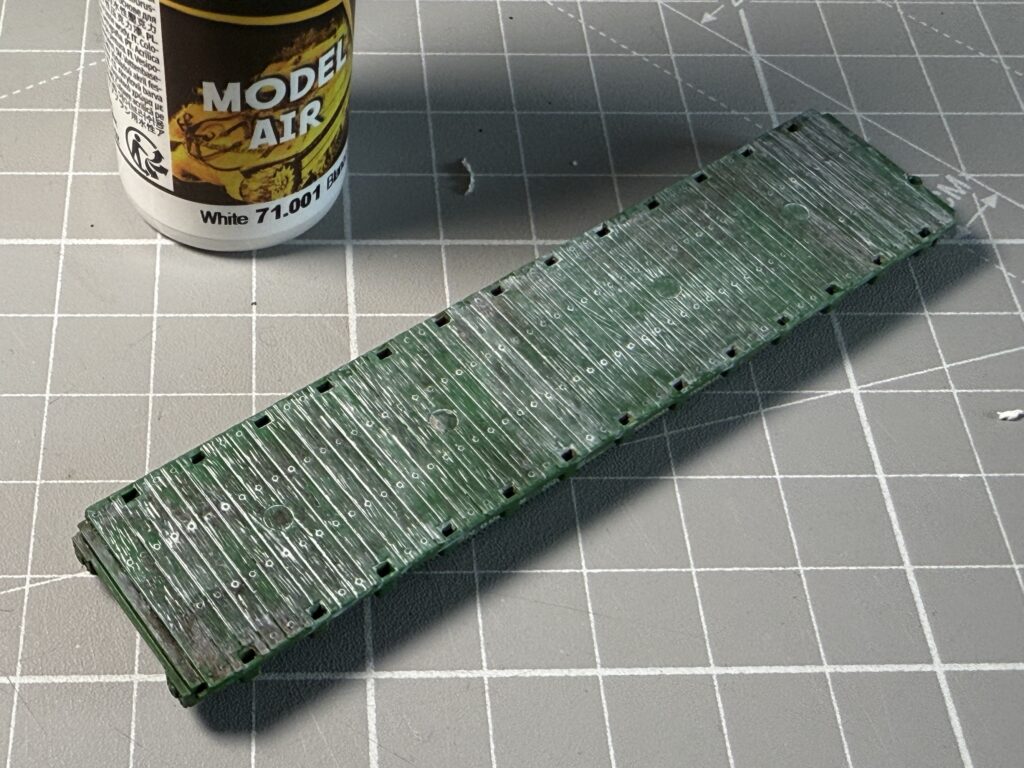
While Retarder Medium helps with layering by slowing down drying time, it also extends the overall drying process. I made sure the paint was completely dry before applying a wash of India ink, allowing it to seep into the gaps between the wooden planks by capillary action.
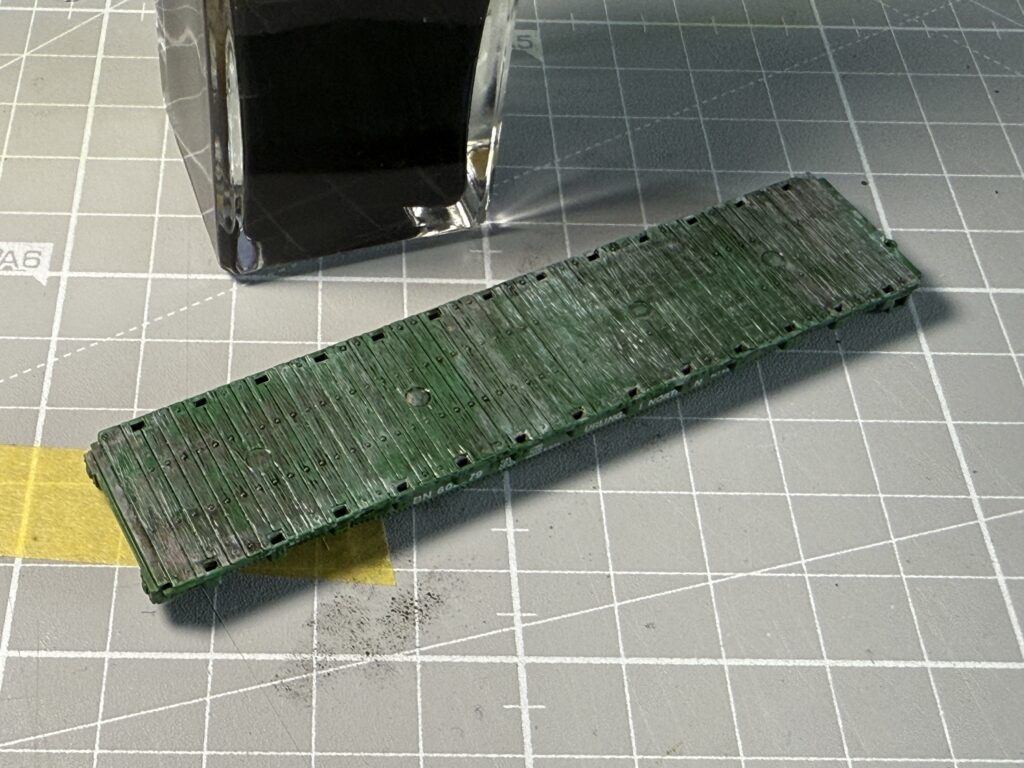
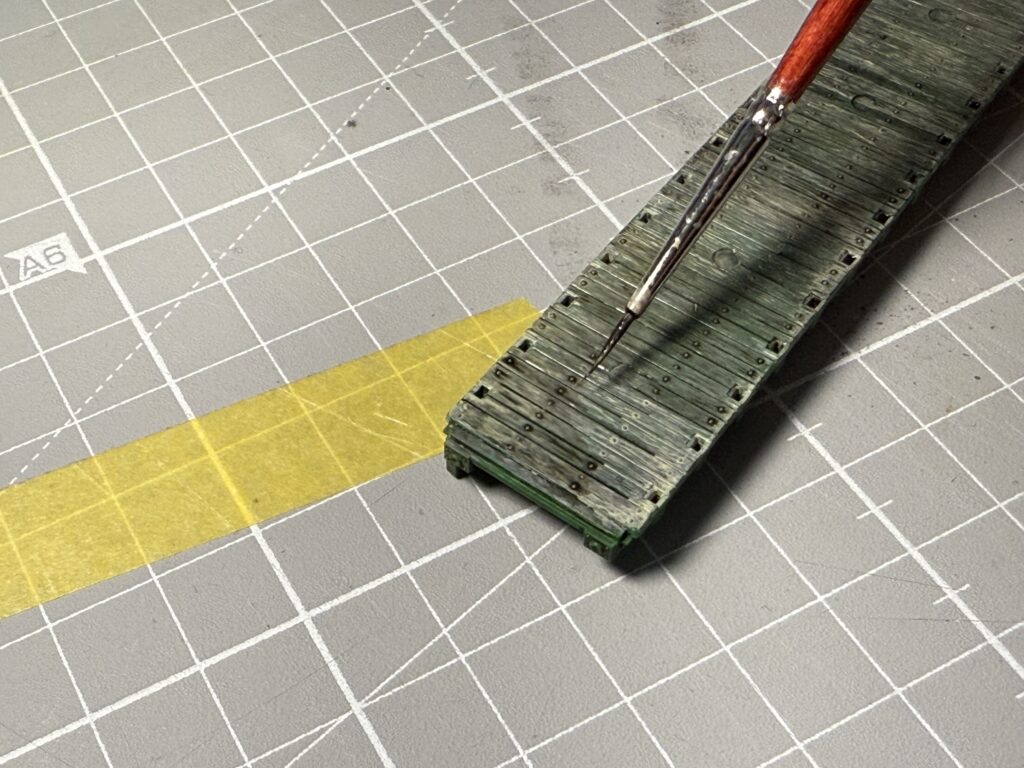
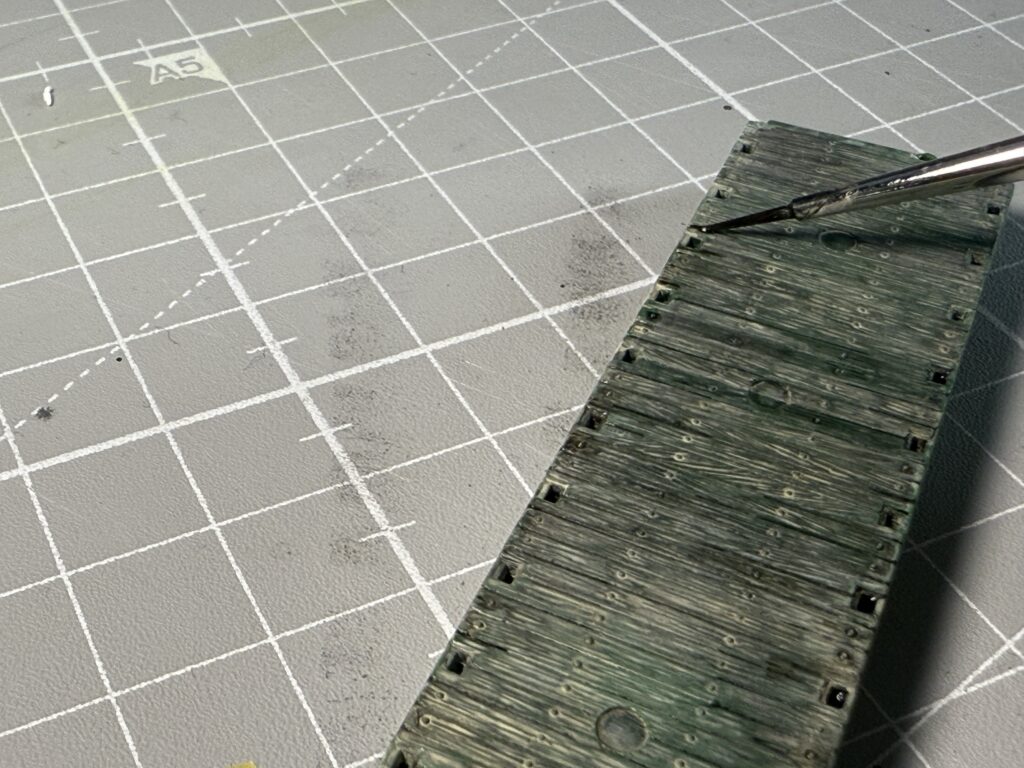
Then I carefully applied Vallejo Wash for rust effects, focusing on the area around rivets.
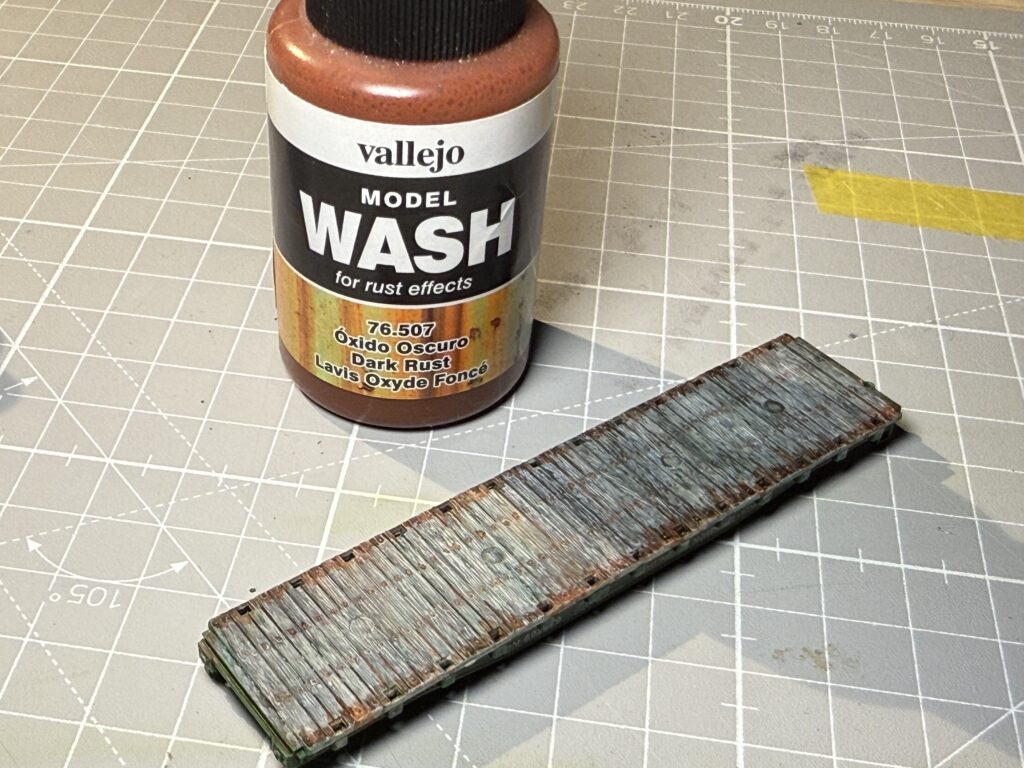
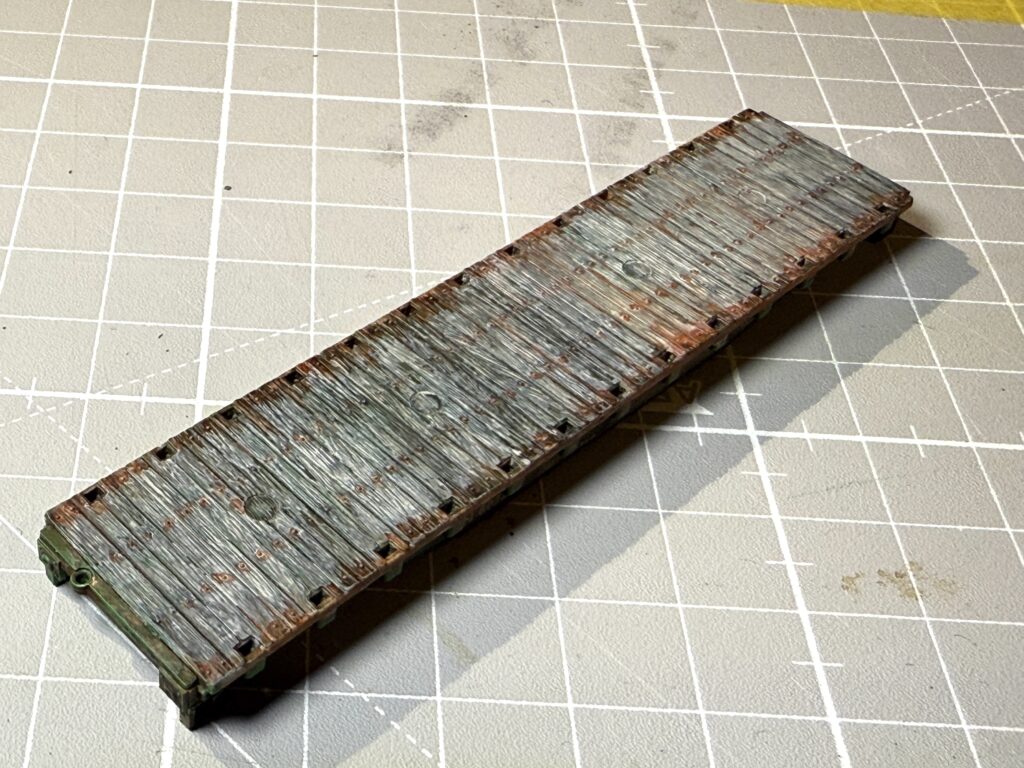
I applied another diluted, random layer of Mahogany (71.036) and N. 41 Dark Olive Drab (71.316) to tone down the red rust color.
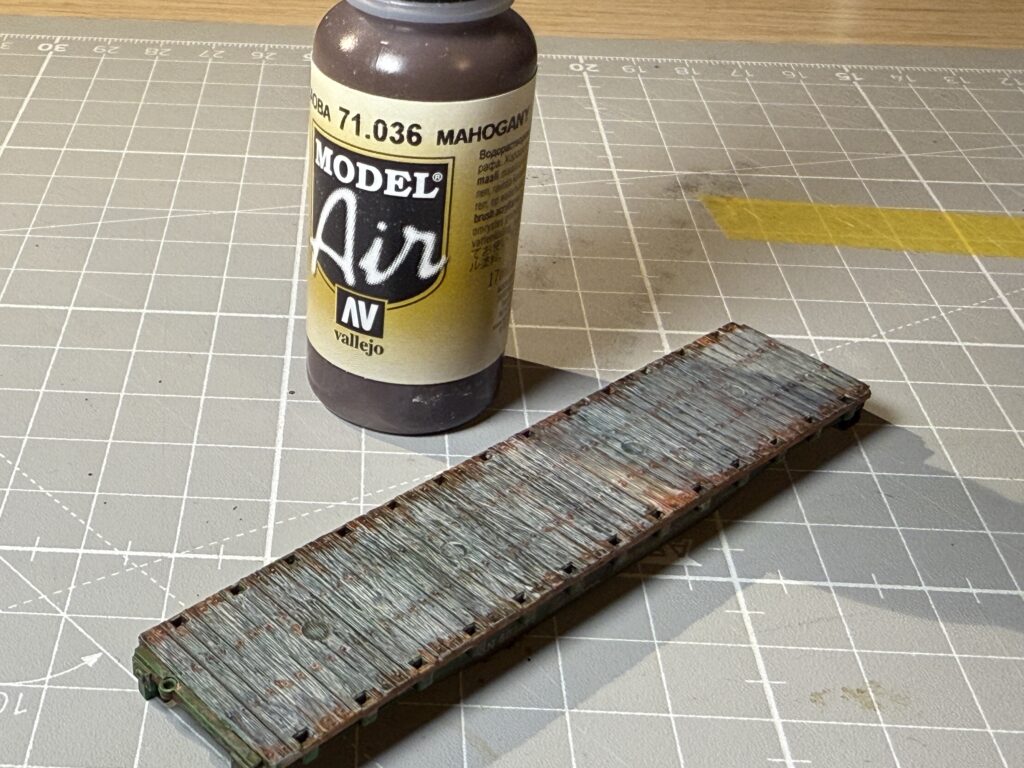
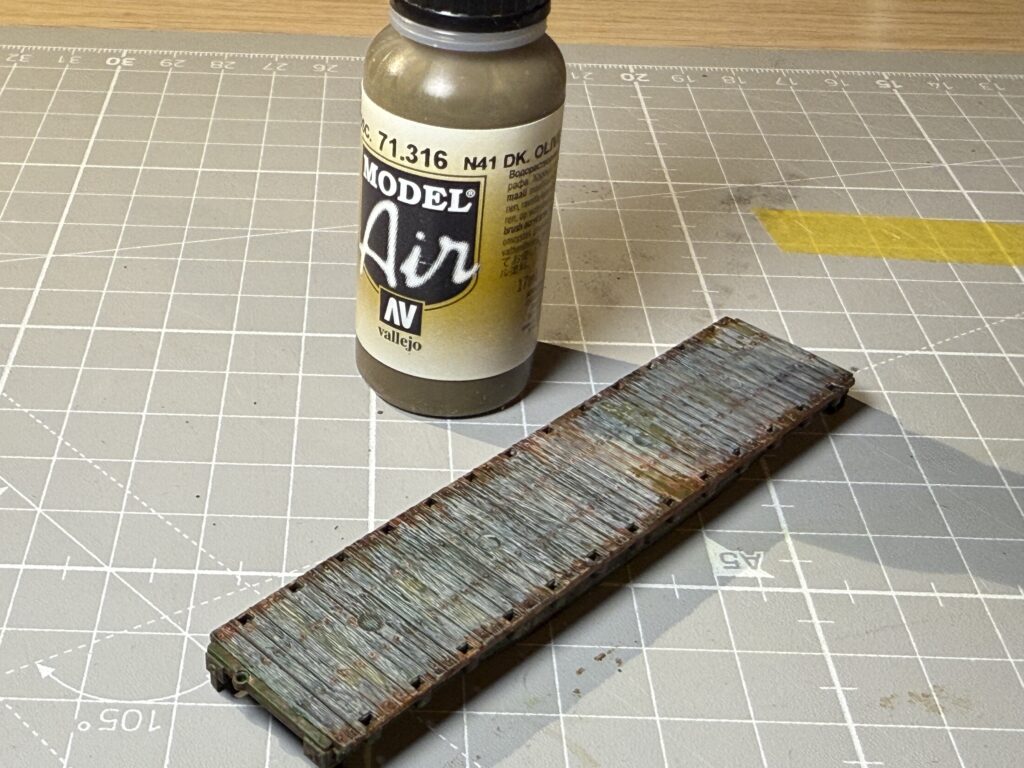
Here is the BN flatcar after the paint has dried.
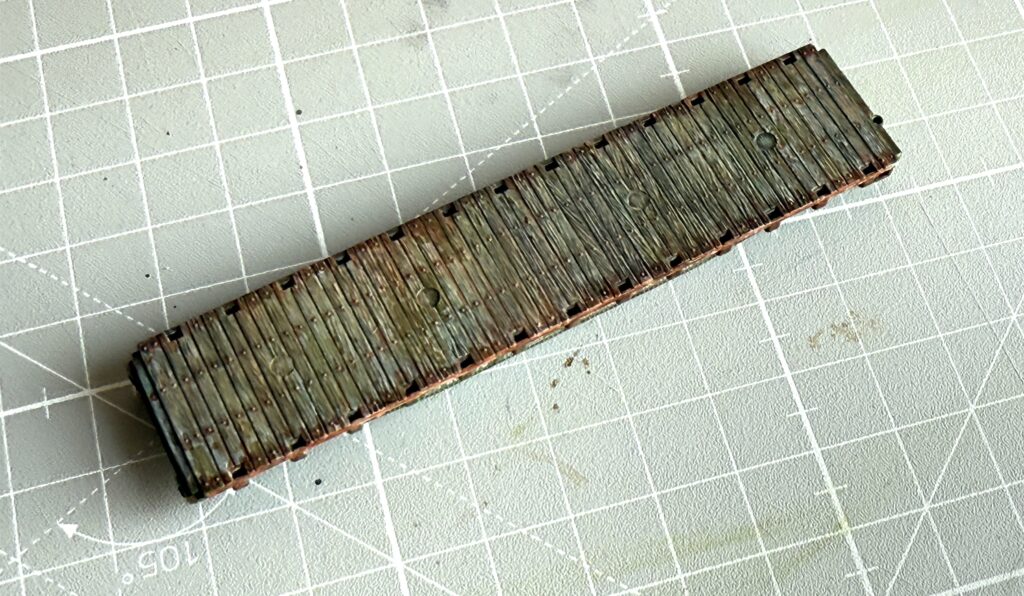
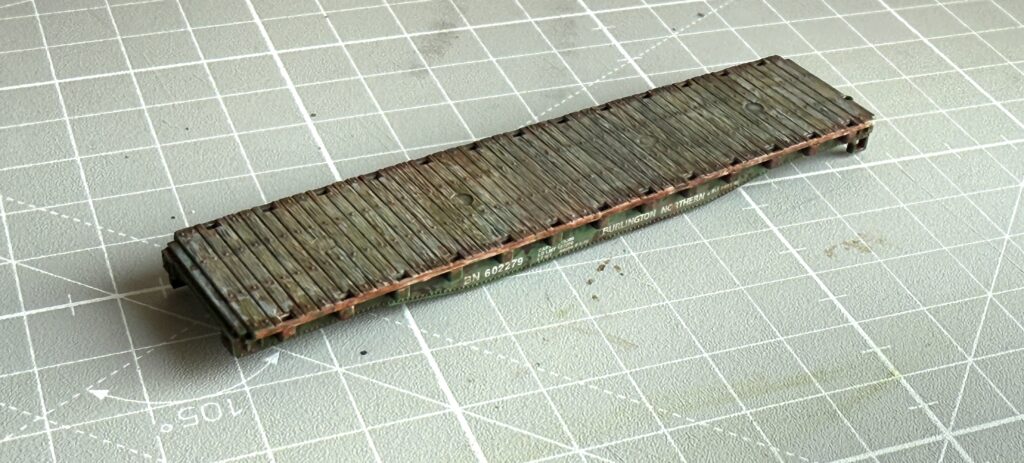
And here is the final result on the SP Con-Cor car. The goal was to create the look of old wooden planks weathered by the elements and stained by various load spills over time.
